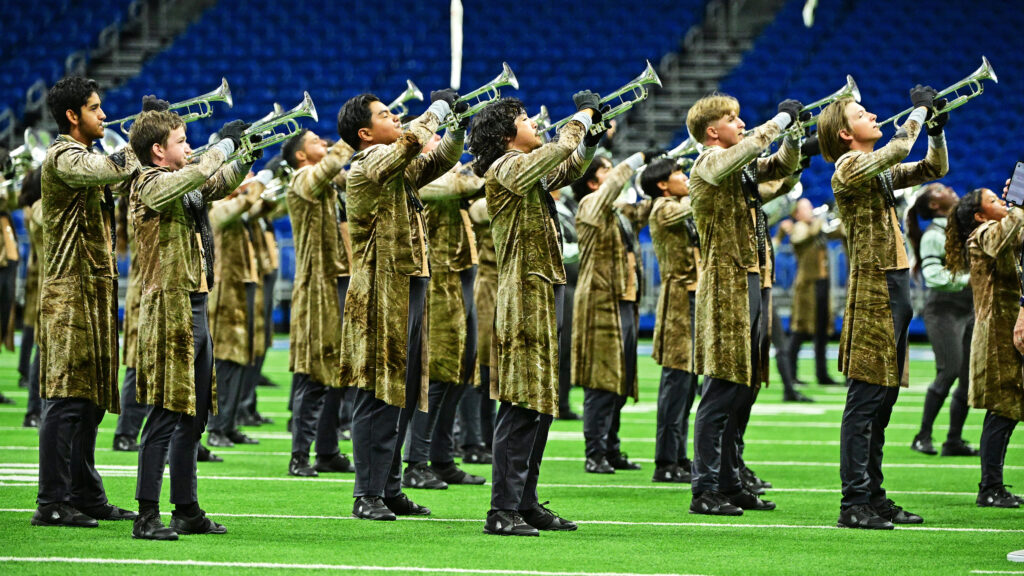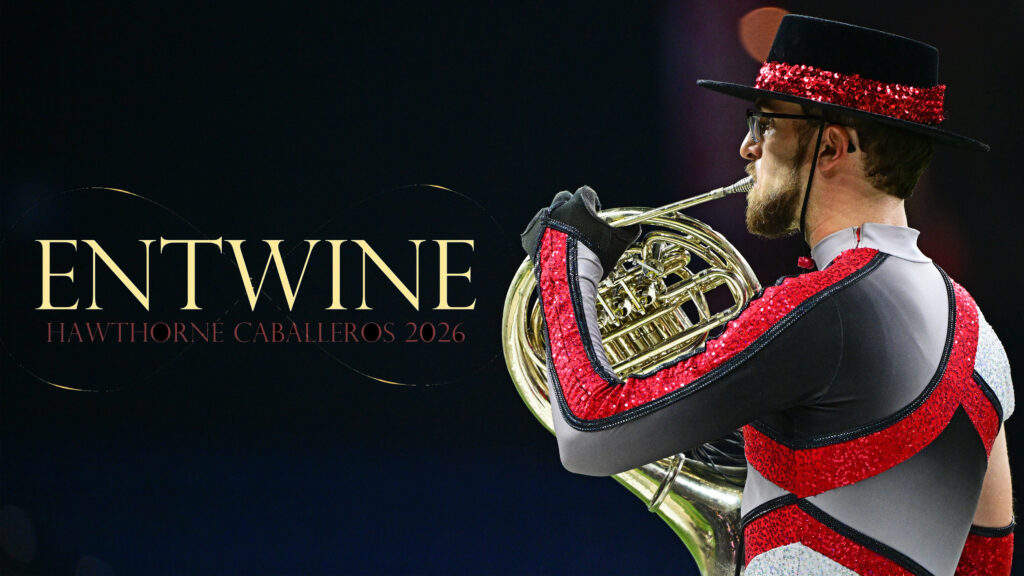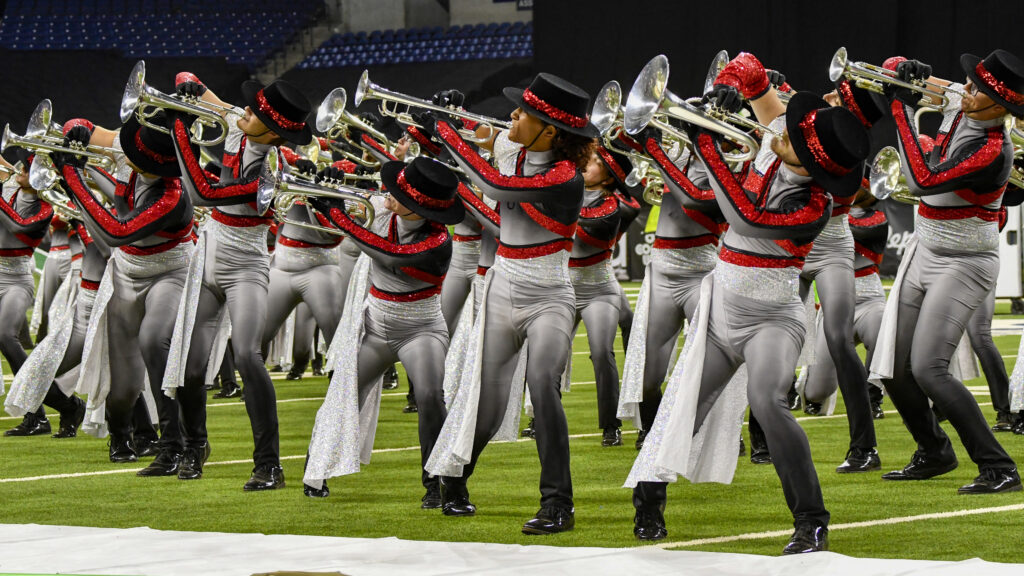The 2005 Drum Corps International World Championships Finals, held at Gillette Stadium outside of Boston, marked one of the hottest and steamiest in history.
With a temperature and heat index breaking a 101-year-old record, The Cadets received an equally high score of 99.150, tying a record set just three years earlier. In winning, the east coast corps scooped up all major caption awards while besting the second-place Cavaliers.
Phantom Regiment ended in third, finishing as a medalist corps for the first time since 1996. Blue Devils earned fourth place for its backward dance marathon after traveling to Europe for over three weeks during the season.

Boston Crusaders finished in ninth place with its 65th anniversary production of “Ode to Joy.” The show concept was based on 20th Century psychologist Abraham Maslow’s hierarchy of needs, a theory about what humans require to feel happy and fulfilled. Among what Maslow established was needed for a good life were elements of purpose, love, and play, all featured as part of the theme of the Crusaders’ show.
The corps opened things up with “Introduction: Jesu, Joy of Man’s Desiring,” a famous work by Johann Sebastian Bach from about 1723.The horns played the first several measures to the backfield, creating a hauntingly beautiful atmosphere prior to turning around and dialing things up in volume. The beautiful music was enhanced visually by a sea of bright striped flags of pinks and related colors woven through the open block formation of horns.
“The Joy of Purpose: Overture to Candide” was based on Leonard Bernstein’s popular “comic operetta,” first performed in 1956 and based on a 1759 novella by French satirical philosopher Voltaire. Its rambunctiousness and rollicking rhythms invigorated the psyche as much as the shocking bright pastel striped flags utilized by color guard members. The corps rapidly transitioned through a couple key changes at the very beginning of the overture before settling in on the key in which the rest of the piece would be played.
Boston’s show designers snuck a snippet of Aaron Copland’s “Appalachian Spring” in during an interlude played by the marimbas, quickly transitioning back to the work at hand before many fans were able to process the brief musical aside. A few seconds later, the vibraphones got into the act with the melody to Bernstein’s “Make Our Garden Grow” from “Candide.” A brief horn quotation of “America” from “West Side Story” showed up in the final company front push.
The next segment, “The Joy of Love: The Promise of Living,” came from Aaron Copland’s 1952-1954 opera, “The Tenderland,” telling the story of a Depression era farm family in the central breadbasket of the United States. Short snippets from “Appalachian Spring” were worked into the lovely ballad. The color guard members filled the field with transparent salmon-colored flags matching their costumes.

After the big musical climax was played to the press box, the horns turned to the back to finish the chorale as a front ensemble percussionist commenced playing a jazz beat on a set of hi-hat cymbals to introduce the next segment.
“The Joy of Play: Sing Sang Sung” featured Gordon Goodwin’s piece written in 2001 that channels jazz clarinetist Benny Goodman’s “Sing Sing Sing” of 1937. An improvisation-like frolic on the vibes in the front ensemble percussion section accompanied the dancing color guard performers and the snare drummers who now had ride cymbals attached to their drum harnesses. This piece was pure fun, as color guard twirled striped flags of wildly effervescent deep pastels.
The entire corps then sauntered to the front of the field to deliver a few closing moments of sheer delirium as part of “Finale: Ode to Joy.” The segment was based on the final movement of Ludwig van Beethoven’s “Symphony No. 9,” an 1824 work oft regarded as the greatest musical celebration of joy ever written.

The piece began with the middle and low brass voices introducing the melody as the trumpets played a brief recap of the Bach melody from the opener. Alternating rotating circles and collapsing and expanding linear forms emphasized a reprise of the “Overture to Candide” theme, interspersed with the bright orange striped flags.
As a final gift to the audience, there was an emphatic musical quote of the “Conquest” rhythmic brass stabs that have long snuck their way into many Crusaders’ shows.
It would be hard to find a more joyful way to end a show about joy.
Related Content

Michael Boo was a member of the Cavaliers from 1975-1977. He wrote about the drum corps activity for more than 35 years while serving as a staff writer for various Drum Corps International projects. During his lifetime Boo wrote for numerous other publications including an honors-winning book on the history of figure skating. He also was an accomplished composer. Boo passed away in 2020 and was inducted into the DCI Hall of Fame posthumously in 2021.





